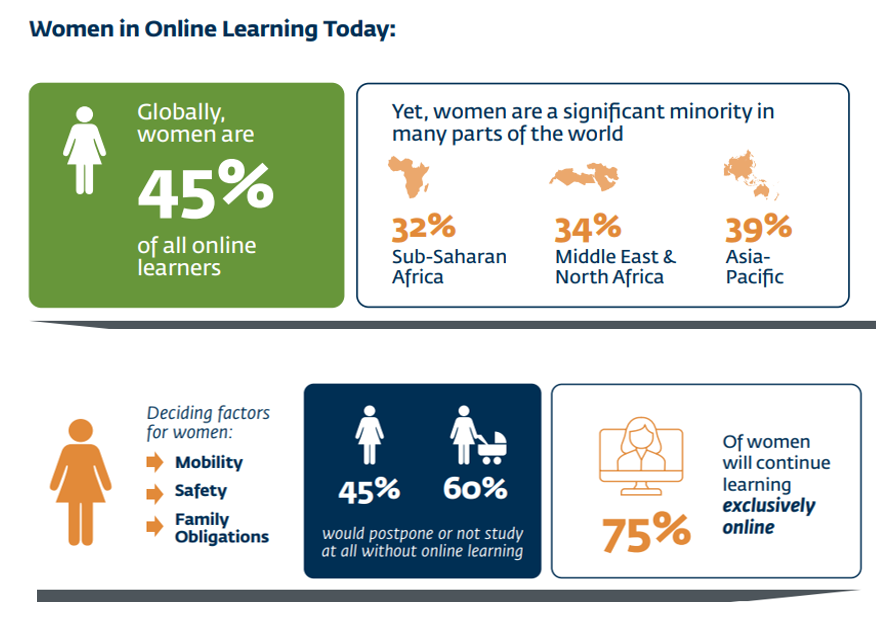
3 Ways Online Learning Can Reduce the Gender Gap in Higher Education and the Workforce
People that begin a doctorate have a certain goal in mind; they want to set a global standard. They seek transformation. They use their legacy to further their desire to improve this world.
In this post, we wish to concentrate on a study done by the World Economic Forum, where the following findings regarding gender parity stand out:
1. It is estimated that it will take 132 years for women to achieve full parity with men in employment, according to the Global Gender Gap Report 2022.
2. The significance of providing women with the education and skills they need to re-enter the workforce, is a crucial step in accelerating the fair and equitable recovery from the pandemic.
3. How equalizing the playing field for women through online learning will help them access better chances and possibilities.
The good news is that online education is enhancing gender inclusion in science areas, erasing barriers for female students, and closing gender inequalities in education. It is also educating women for in-demand occupations in the digital economy. STEM fields, as well as introducing women to expanding professional options and skill sets
The participation of women learning online has increased significantly and is starting to match the participation of men in many countries, according to global data from Coursera in the Global Gender Gap Report 2022. In fact, the number of women learning online increased from 38% in 2019 to 45% in 2021, even as the gender employment gap widened.

Source: www.ifc.org
Women and Online Learning in Emerging Markets, a new paper created by the IFC (World Bank Group) in association with Coursera and the European Commission, contains these intriguing and enlightening insights.
Further evidence from the study confirming the superiority of online learning includes the following:
According to IFC research, 45% of women and 60% of caregivers in poor nations indicated they would have had to delay or quit education if online learning was not an option.
Finance surfaced as a major obstacle for women in the study of female students, placing nearly half of them in the lower 50th percentile of income in their nation. This highlights the need of accessible learning in promoting fair outcomes.
Online learning models, which take advantage of technology and have cheaper delivery costs thanks to the expansion of broadband connectivity, are helping to reach previously unreachable women.
Conclusion: Despite the considerable gap, technological advancement has allowed for the construction of bridges that will help close it in the interests of equality and education.